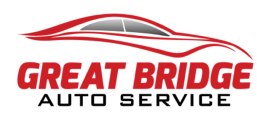Good handling and smooth ride. These are characteristics we take for granted our vehicle will deliver every time we get behind the wheel thanks to our suspension system.
Your suspension system is the carefully crafted component designed to take the “bite” out of road surfaces and to make braking, accelerating and cornering safer. If you feel a shake, rattle or roll (and not because Elvis is playing on the radio) while riding down the road, it is time for the technicians at Great Bridge Auto Service to see if you need a suspension repair.
Common Questions
What are signs of suspension problems?
- Vehicle bounces when going over bumps.
- Vehicle pulls to one side when driving.
- Vehicle makes clunking noises when going over bumps.
- Vehicle dips or “nose-dives” when stopping.
- Vehicle has uneven tire tread.
What basic parts make up the suspension system?
- Ball joints: Allows wheels to move flexibly by pivoting or rotating as they come in contact with various surfaces.
- Springs: Absorbs energy from dips in the road to provide a cushioning effect.
- Shocks and struts: Help control the energy transferred to the springs to eliminate the “bounce effect” and provide a smoother ride.
- Stabilizer bars (anti-sway bars): Provides stability and reduces sway as a vehicle leans to round corners.
- Control arm bushings: Houses the ball joints and connects to the vehicle’s frame
What are the two most common types of suspension systems?
Most vehicles have independent front suspension systems. There are other systems, but we’ll focus on the most common.
-
Double-wishbone suspension:
Uses two wishbone-shaped control arms to hold the wheels to the frame. This system allows for greater wheel rotation and pivoting.
Advantages:
- Great camber control to provide excellent “handling
- Steering and wheel alignments are more stable
Disadvantages:
- Takes up more space
- Heavy
- Expensive and complex system to repair
-
MacPherson suspension:
Combines the shock absorber and coil spring into one unit and has no control arm. The upper strut mounts

Photo Courtesy ProjectManhattan Via Wikipedia Commons hold the wheel in place.
Advantages:
- Compact to provide more passenger compartment space
- Inexpensive
- Lightweight so vehicle can accelerate more quickly
- More comfortable ride with less vibration
Disadvantages:
- Average handling
